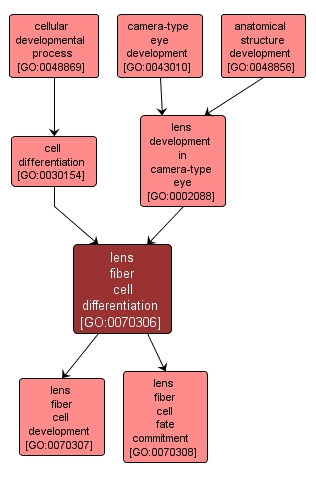| Desc: |
The process whereby a relatively unspecialized cell acquires specialized features of a lens fiber cell, any of the elongated, tightly packed cells that make up the bulk of the mature lens in the camera-type eye. The cytoplasm of a lens fiber cell is devoid of most intracellular organelles including the cell nucleus, and contains primarily crystallins, a group of water-soluble proteins expressed in vary large quantities. |














